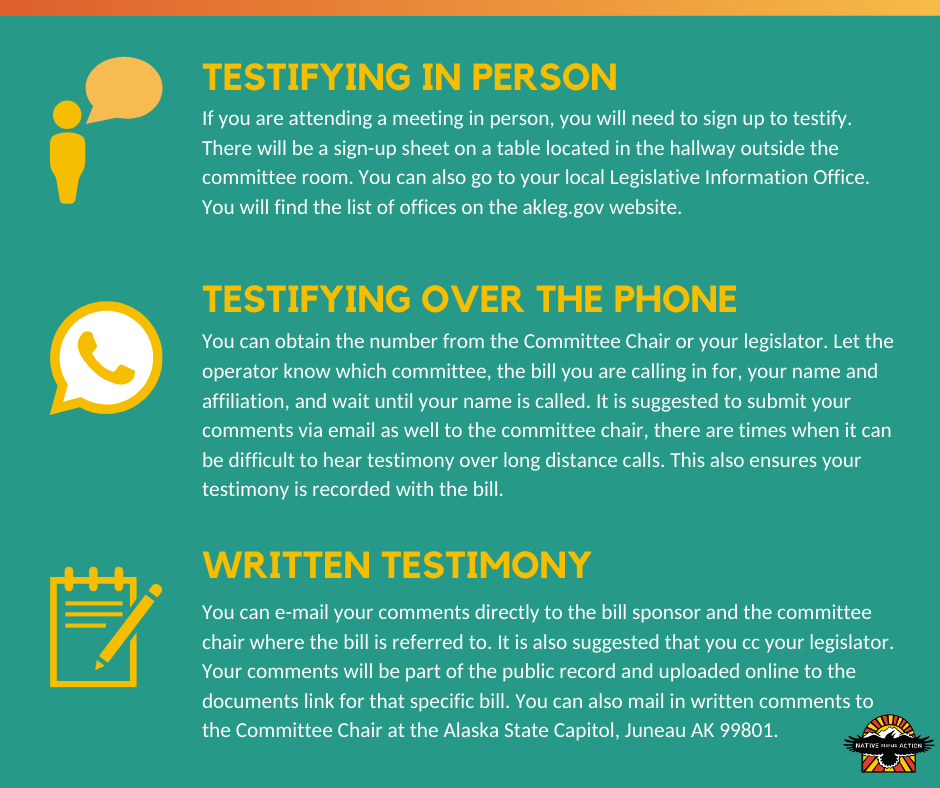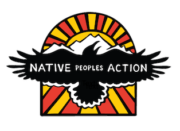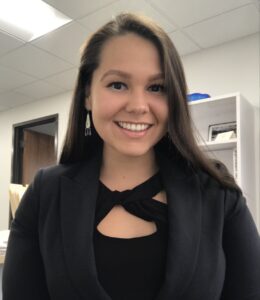 Camai, all. My name is Jackie Boyer or Arnaciar (ughh-uhh-naa-jaq). I’m Cupi’g with roots from Nunivak Island Mekoryuk, Alaska. I am the Campaign and Policy Director for Native Peoples Action and Native Peoples Action Community Fund. My work background is in our Alaska state legislature.I started in a rural senator’s office the January after I graduated from high school and stayed working in Juneau for a few years. In that time, I worked serving relatives all the way up in Utqiagvik down to serving friends in Anchorage.
Camai, all. My name is Jackie Boyer or Arnaciar (ughh-uhh-naa-jaq). I’m Cupi’g with roots from Nunivak Island Mekoryuk, Alaska. I am the Campaign and Policy Director for Native Peoples Action and Native Peoples Action Community Fund. My work background is in our Alaska state legislature.I started in a rural senator’s office the January after I graduated from high school and stayed working in Juneau for a few years. In that time, I worked serving relatives all the way up in Utqiagvik down to serving friends in Anchorage.
My personal background is a little non-traditional for staff in Juneau. With a complicated family history, I ended up raising my siblings and taking them with me to our capital city in my early twenties. I felt out of place, not having the same type of upbringing as some of the other people in powerful positions, but I felt like that was the place I needed to be in order to be here in this position today. I learned a lot and I feel so blessed to be in a position where I can help uplift other voices in this legislative process and help communicate our needs with decision makers in Juneau and Washington, D.C. Quyana for reading and allowing me to share parts of who I am with you.
One thing on the horizon that I am excited to take the lead on is the upcoming NPA blog where I will write to break down in first person what is happening in our capitol building. This NPA blog will be a space for information sharing, accessibility and understanding, and teachings on how to get involved. Parts of the blog will be specifically focused on protecting our traditional ways of life and how we can collectively work to protect and promote our rights in these state and federal management systems. We need to make sure Indigenous knowledge is at every level of government and decision making – more so, we need to make sure our Indigenous knowledge is at the forefront of these decision making processes.
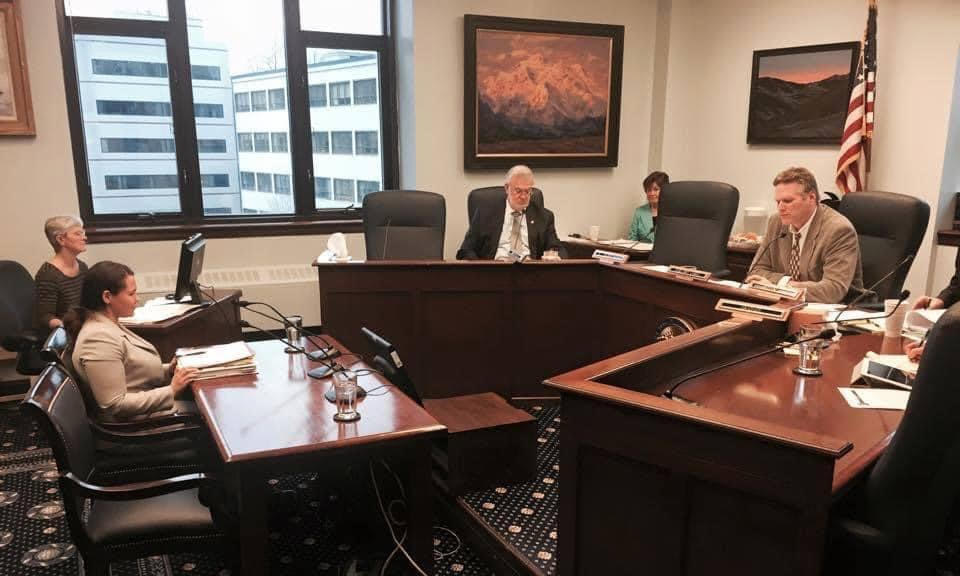
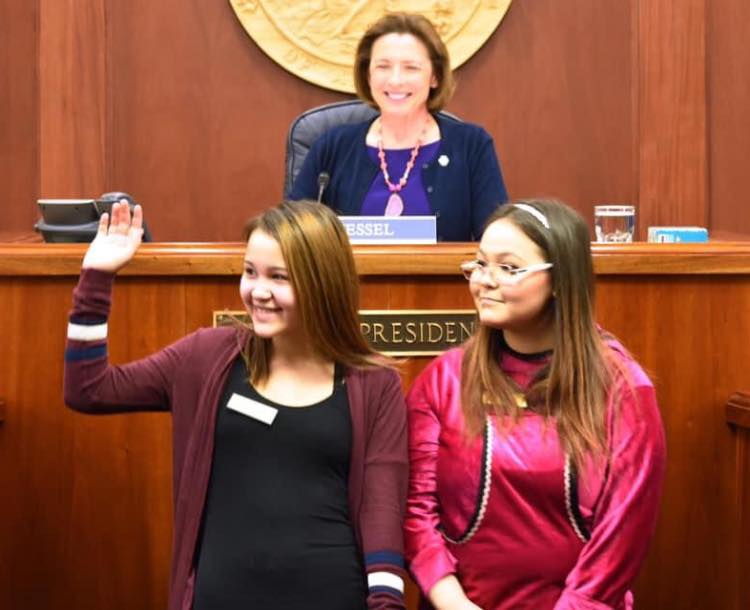
Here’s a brief breakdown of the Legislative process:
The Alaska Legislature is made up of individual members of the House of Representatives and the Senate. These members of the legislature are tasked with providing a budget for the State of Alaska and passing laws for the betterment of our state. That is their job and the reason why they were elected by voters (you). While this seems simple and straightforward, it’s been proven difficult to get a majority of 60 people to agree. There are 20 senators and 40 representatives in Alaska that represent areas of the state, you can find your elected officials HERE.
There are 2 regular legislative sessions that happen with each elected legislature. On January 18, 2022, the legislature gaveled in for the 2nd session of the 32nd Legislature. Essentially, this year is a continuation of last year – same people, same legislation (plus new legislation that is introduced), but a different budget for the next fiscal year. The regular legislative session is set to last 90 days, however, in recent years the legislature has gone into extended session which is allowed by the Alaska Constitution. This allows up to 121 day of a regular session. Since this is the last session of the 32nd Legislature, no additional legislation can be introduced after the 35th day of session – this makes it a little easier to track the many bills moving throughout the legislative session. You can find a list of current legislation, here.
Budget
Here’s a quick crash course on some of the terminology used:
Fiscal year (FY) – The money year. Alaska operates on fiscal years of July – June, not calendar years. The budget must be approved by June 30th at the latest to keep the government operating.
Unrestricted General Funds (UGF) – These are the funds that are freely available to be spent by the legislature.
Designated General Funds (DGF) – These funds are tied to certain programs – the constitution prohibits dedicated funds, meaning the funds *must* go here, but this is a workaround earmark (designated for something else) for funding
Federal Funds – This is funding brought in by the federal government
Other Funds – Miscellaneous funds, like revenues from fees at the DMV
Operating budget – This is the yearly budget that the legislature must pass to fund the big items like: Health and Social Services, Public Safety, Education, and Transportation.
Capital budget – This means the short-term funding that is designed to fund certain items such as road maintenance and specific upgrades to schools, parks, airports, and other facilities. The capital budget has gotten smaller and smaller over the years.
Mental health budget bill – Mental health is separate from the rest of the budget.
Supplemental budget – This is a budget that the governor requests when certain departments go over the appropriated budget. For example, if there was a wildfire that cost additional money, wildlife services would do the work to put out the fire, and come back and ask for the money back the following year.
Revenue – This is the income for the state. There are no statewide taxes, so the majority of our income comes from: the federal government, oil and gas, and investments like the permanent fund. You can read more about revenue sources, here: http://tax.alaska.gov/
You can also watch a presentation on the revenue forecast here.
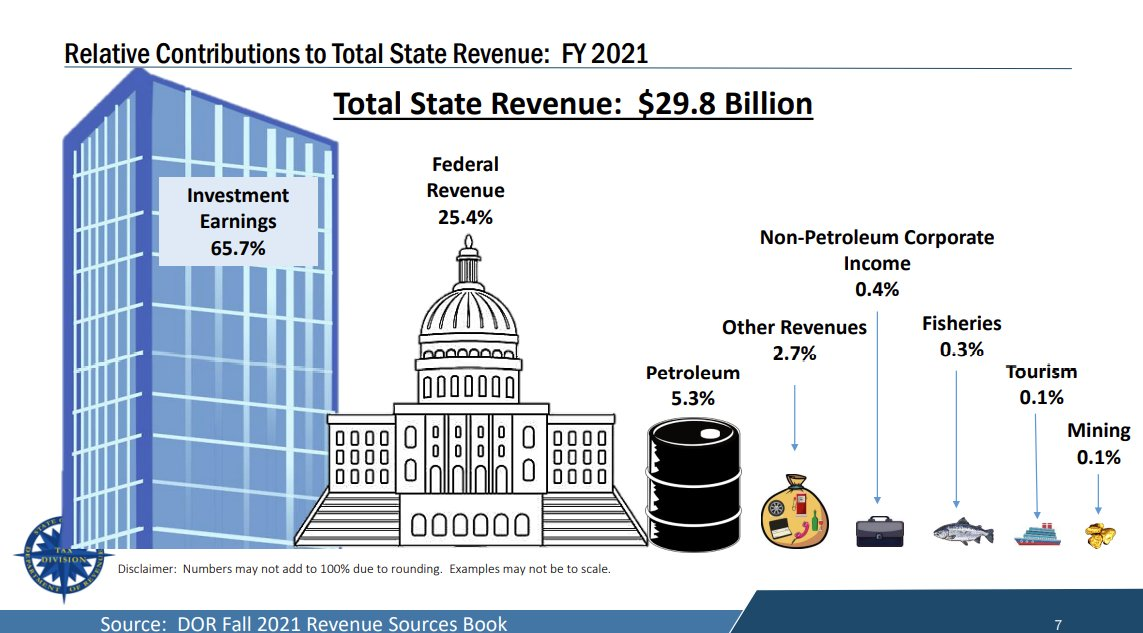
A great resource for learning more about the budget is the budget handbook published by the legislative finance division: https://legfin.akleg.gov/Other/BudgetHandbook20.pdf
It’s fairly straight forward if you would like to dive a little deeper or search for simple graphics, definitions, processes. You can also reach out to your legislator and talk about the budget and what it means for your area. Remember, they are in office to serve your community, you, and your interests.
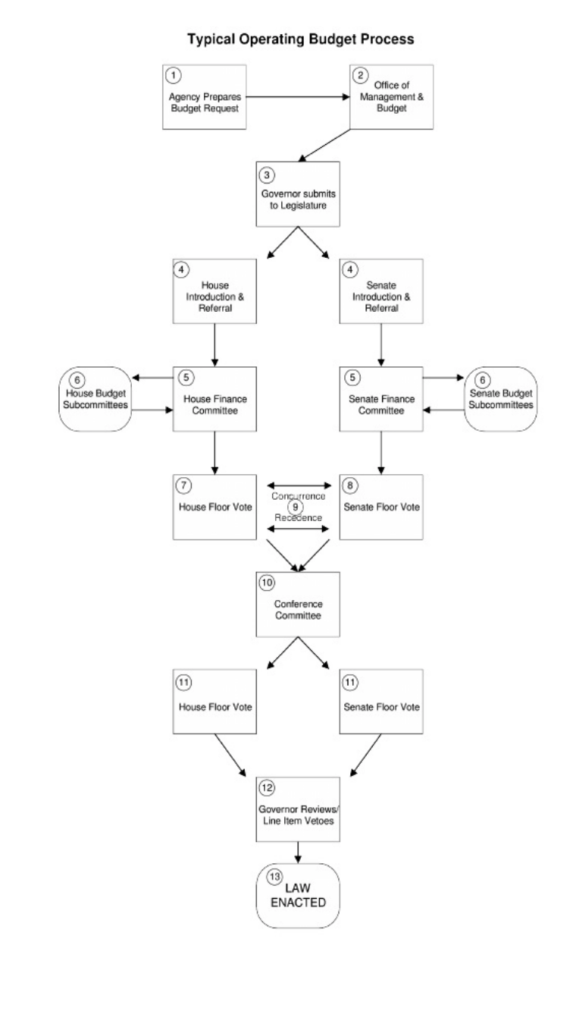
FY23 Budget
While the Legislature is tasked with passing a budget, the Governor must introduce a draft budget by December 15th of each year for the legislature to begin working on. The Governor’s FY23 (this year’s) budget can be found here. Here is an additional resource that you can utilize to learn more about the budget. The Governor also has the ability to amend his budget, up to day 30 of the legislative session.
Some highlights from Governor Dunleavy’s current budget:
FY 23 Proposed Budget
- $6.1 Billion in Unrestricted General Funds
- $877 Million in Designated General Funds
- $1.7 Billion in other Funds
- $3.2 Billion in Federal Funds
Public Safety:
- $2.9 million for an increase of 10 new Village Public Safety Officer positions and to give existing VPSO’s a 5% raise
- $6.3 million for domestic violence and sexual assault prevention programs
Education:
- Full funding for the Base Student Allocation formula
- Full funding for school construction and maintenance in Regional Education Attendance Areas
- $54.9 million to replace the Napakiak school, due to the erosion from the Kuskokwim River
Energy:
- Full funding for the Power Cost Equalization program
- $1.5 million for Electric Vehicle Infrastructure
- $2.5 million to fund an AEA Strategic Plan for Railbelt Assets to improve power transmission and make the grid more reliable and resilient
- $17 million for the Rural Power System Upgrades program
- $5.5 million for the Bulk Fuel Upgrades program
You can read more about the budget Governor Dunleavy released and his remarks when he released the budget, here.
Legislation We Are Following:
MMIWG and Public Safety
In a special newsletter by NPA Executive Director Kendra Kloster, she highlighted the need for attention to rural public safety and the crisis of missing and murdered Indigenous women. NPA has been working on these issues intimately since our inception in 2016 and co-created the Alaska MMIWG2S+ Working Group with Native Movement, Alaska Native Justice Center, Alaska Native Women’s Resource Center, the Alaska Native Heritage Center and Data for Indigenous Justice. We continue to advocate for legislation and funding that will address this disparity. You can see some of our advocacy and policy/funding asks through a recent letters sent to Governor Dunleavy and Alaska Legislators, which we send letters every year and meet with legislative offices regularly. We are closely following the budget to ensure funds stay in for MMIWG and public safety. Additionally, we are following HB 38 – the Missing and Murdered Indigenous Women bill, SB 81 – Village Public Safety Officer Grants, and HB 5 – Definition of Consent.
Protecting Our Ways of Life
Alaska is home to 10+ thousand years of traditional knowledge, 229 federally recognized tribes, 20 Indigenous languages, yet ZERO state recognized Tribes. HB 123 and SB 108 would fix this disservice to the inherent sovereignty that tribes possess. Additionally, the state recognition would streamline some of the government-to-government relationships that exist between the state and tribes. NPA will be sharing information about how to get involved in the passage of this important bill soon.
Languages
Our languages connect to us in a deep and spiritual way. In our history, we know how much we lost with the boarding school and the “kill the Indian save the man” era. My grandma and grandfather refused to teach their children and grandchildren our language after the shame that was brought by teaching in schools and the forced assimilation. It is wholly appropriate that the government which was a part of the harm, be part of the solution. Over the years, there has been an increase in attention and action on promoting language revitalization and usage. A few from this session include:
HB 19 – limited language teacher certificates gives the State Board of Education and Early Development the tools necessary to tackle one of the biggest challenges facing Alaska’s immersion programs: finding fully certified teachers also fluent in an Alaska Native or foreign language. Under HB 19, the state board could provide school districts case-by-case flexibility to hire language immersion teachers they know are qualified to lead a classroom but who — for reasons such as limited English proficiency, advanced age, or familial responsibilities — are unable at the time to get a full teacher certification.
HB 47/SB 109 – Council for Alaska Native Languages reflects a request from the Alaska Native Language Preservation and Advisory Council to change its name to the “Council for Alaska Native Languages.” This change would shorten the Council’s name while emphasizing the Council’s broader focus, which includes more than just language preservation. This would also increase membership from 5 to 7 members in recognition of the diversity of Alaska Native languages in the state. This allows for greater language representation on the Council and increases the involvement of a great number of native language speakers from different regions of the state.
Voting
We are dedicated to improving voter access and ensuring that all Alaskans have equitable access to voting by advocating at the state and federal levels. We have heard from numerous Alaskans about some difficulties and barriers that have been encountered, so we have worked with legislators to pass on those concerns and ideas for enhancement. There are a number of bills introduced in the legislature that we are following and supporting that will help to enhance our current voter laws including House Bill 66 which includes same day voter registration, ballot curing (allowing a voter to fix their ballot if it is rejected if there was a mistake in filling out the ballot), create an option for permanent absentee voting, calling for the same early voting locations each year, and more.
We are also tracking bills related to voting and our elections that include some harmful policies that could increase barriers and make our voting system more complicated including Senate Bill 39.
We have reached out to Lt. Governor Kevin Meyer , who oversees elections in our state, to share what we have been hearing from Alaskans, sharing ideas to improve our voting system, and encouraging bi-partisan efforts to remove any barriers to voting that currently exist and create more opportunities for people to participate – including increased language assistance.
Equity
Power Cost Equalization – While this fall time, we heard from the courts that the Power Cost Equalization Program is not subject to appropriation – meaning the funds from the endowment must be paid out to the program, there is still the possibility that legislators try to dip into the funds – especially when revenues are down. NPA has seen 2 bills introduced so far that have to do with the PCE program. We will send out that information and action alerts about it. To read more about PCE and its history, visit our website
SB 34 – State Tribal Education Compact would provide Tribes the opportunity to voluntarily apply to establish a State-Tribal compact school. State-tribal compact schools will affirm the State’s commitment to educating Alaska’s children, and honor a government-to-government relationship with Tribes by partnering with them to improve educational outcomes.
Find Out Who Represents You
You can visit the akleg website and type in your address at the bottom to find out who represents you, from there you can click on their profile to find out more about them and how to contact their office. You can also find your senator and representative’s official state page on facebook and follow them for updates. You can also go to their caucus website to find out more about them and sign up for their newsletters and press releases
Senate Majority: https://www.alaskasenate.org/
Senate Minority: https://aksenatedems.com/
House Majority: https://akhouse.org/
House Minority: https://alaskahousegop.com/
Sign up for notifications on bills
Do you have a special interest in a piece of legislation? You can sign up for SMS Bill Tracking! Text a bill number (ex: HB123) to 559-245-2529 to enroll in text alerts. You will receive an enrollment confirmation and instructions on how to stop receiving the alerts.
Find Out Public Testimony Opportunities & Testify
